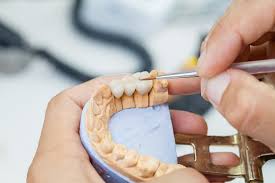Dealing with a spinal fracture, also known as a vertebral compression fracture (VCF), can be a challenging experience. These fractures often result from osteoporosis, which weakens the bones, but they can also occur because of trauma or other medical conditions. When a VCF causes pain or affects your mobility, your doctor might discuss different treatment options. Two common minimally invasive procedures are vertebroplasty and kyphoplasty. Understanding what these procedures involve can help you have a more informed conversation with your healthcare provider about your specific situation.
What Is Kyphoplasty Surgery?
Kyphoplasty is a procedure designed to treat vertebral compression fractures. It aims to stabilize the fracture and may also help restore some of the lost vertebral height. A specialist performs the procedure by making a small incision in the back to access the fractured vertebra.
Using imaging guidance, the specialist inserts a narrow tube into the bone. Through this tube, a special balloon is placed into the compressed vertebra. Then the balloon is carefully inflated. This action elevates the compressed bone, creating a cavity and helping to return the vertebra closer to its original height. After removing the balloon, the specialist fills the newly created space with a medical-grade bone cement. This cement hardens quickly, which stabilizes the bone. The primary goal of a kyphoplasty is to strengthen the fractured vertebra.
What Are the Differences?
While vertebroplasty and kyphoplasty are similar procedures that use bone cement to stabilize fractures, they differ in the technique used. This difference centers on the use of a balloon to create space within the vertebra before injecting the cement.
Kyphoplasty
In a kyphoplasty procedure, a balloon is a central component. A specialist inserts and inflates this balloon inside the fractured vertebra. This step creates a cavity and can help restore some of the vertebral height lost when the bone collapsed. The cement is then injected into this pre-formed space.
Vertebroplasty
Vertebroplasty does not involve a balloon. Instead, a specialist injects the bone cement directly into the fractured vertebra under pressure. The cement flows into the cracks of the fractured bone to provide stabilization. Because no balloon is used to create a cavity, this procedure does not typically restore vertebral height.
When Is Each Procedure Recommended?
A specialist will evaluate your specific condition, including the nature of the fracture and your overall health, to suggest a course of action. The timing and severity of the fracture often influence the recommendation.
Here are some general situations where each procedure might be suggested:
- Kyphoplasty: This procedure may be recommended for more recent fractures where there is a possibility of restoring some of the vertebral body height. It is often used when the vertebral collapse is more significant. Balloon inflation helps gently lift the collapsed bone before stabilization.
- Vertebroplasty: This procedure can be an option for stabilizing painful fractures where height restoration is not a primary objective. It is effective for strengthening the bone and is sometimes chosen for older fractures or when the degree of collapse is less severe.
The decision is based on a thorough medical evaluation. Your specialist will review imaging scans, like X-rays or an MRI, to understand the specifics of your fracture and determine the most suitable approach for you.
Consult a Specialist
Understanding the differences between vertebroplasty and kyphoplasty can help you prepare for a discussion with your doctor. Each procedure has its own specific technique and goals for treating painful vertebral compression fractures. Your medical history, the details of your fracture, and a specialist’s assessment will guide the final treatment plan. For personalized advice, it is best to speak with a qualified healthcare professional. They can provide detailed information and answer any questions you have about your condition.









